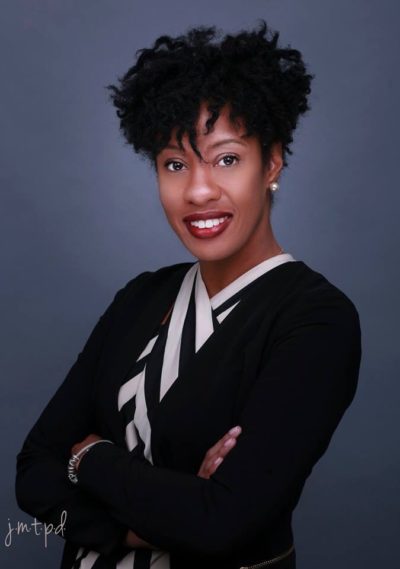 The National Fund network consists of dozens of effective local workforce development professionals leading efforts in their communities to connect individuals with work and to provide businesses with skilled employees. Their skills and insights drive the National Fund, and we want to introduce new and established directors in our Meet National Fund Leaders blog series.
The National Fund network consists of dozens of effective local workforce development professionals leading efforts in their communities to connect individuals with work and to provide businesses with skilled employees. Their skills and insights drive the National Fund, and we want to introduce new and established directors in our Meet National Fund Leaders blog series.
The following conversation with Clarinda Harrison was lightly edited and published in full.
What is the Detroit Regional Workforce Fund, and which organizations supports its efforts?
Our Fund is a collaboration of leading philanthropy focused on workforce development and partners providing thought leadership and direct services. We’re addressing the key issue of how to leverage philanthropic power and inform the work happening at the grass tops and grass roots with the goal of being as impactful as possible in changing the disparate economic dynamics of Detroit and Southeast Michigan. As the region grows and recovers from the Great Recession, poverty persists in certain areas and as a result we are focusing on equitable economic growth for households in need.
The partners in this effort include the United Way for Southeastern Michigan, JPMorgan Chase & Co., PNC Bank, the W.K. Kellogg Foundation, the City of Detroit Mayor’s Office of Workforce Development, General Motors Corp, Detroit LISC, the Blue Cross Blue Shield Foundation, and the State of Michigan Talent Investment Agency.
Why does Detroit need a collaborative focused on workforce development?
Building on the challenge of equity, we want to make certain that individuals who are unattached from education or the workforce are able to participate in our region’s economic resurgence. As the automotive sector evolves and becomes more technologically advanced, we are seeing a transformation of the region’s traditional economic powerhouses. We are experiencing an insurgence of construction activity with commercial and housing growth resulting in an increased demand for skilled trades. The same growth is true in healthcare where we are working build on efforts to identify and connect individuals with barriers to employment to high demand jobs. The most growth is in business services sector as professional organizations are basing their operations in downtown Detroit providing professional opportunities such as call centers and IT support. As the economy evolves, we need to make sure targeted populations are able to grow and evolve as well.
What work were you doing prior to joining the collaborative? What insights do you think your prior experience brings to this new role?
Prior to starting as our Collaborative Director, I worked in economic development for the majority of my career focused on business development and helping companies finance their growth and investment and to access and retain their talent pools. With the University of Michigan, I lead the Business Engagement Center, an organization that sought to connect regional companies to the university on talent initiatives as well as translational research. My most relevant experience came from my experience at the Michigan Economic Development Corporations where I led a pilot regional effort called Community Ventures, in which we addressed structural unemployment by building out a demand-based pipeline of individuals who were traditional crowded-out of economic opportunity. I worked with growing corporations that had critical talent shortages and partnered with human services and local training organizations to develop career pathways into high-growth in demand jobs that paid living-wages. Since my departure, the initiative has become an embedded effort inside of the State of Michigan’s key workforce programming. The success I had in my previous roles is evidence of the critical need for community organizations and private industry to work together to develop a shared solution.
What are you most interested in learning from the National Fund network and testing in Detroit?
We are very interested in implementing more career pathway models. I am familiar with CareerSTAT and am eager to launch some of its practices with healthcare organizations in Detroit. Overall, we are very interested in learning more about the strategies and programs being implemented in other communities. For example, I’ve heard of regions in which employers pay into a regional talent development system, and we are looking for new ways to engage the private sector in increasing their investments and building pathways for some of our communities’ hardest to employ.
What is on the horizon for the collaborative that excites you?
I think what is most exciting is that we have so many local organizations providing workforce development services. By being hosted with the United Way, with its deep understanding of and investment in local community-based organizations (CBO), we are leveraging the power of being more aligned in lifting up effective CBOs doing the work, developing best practices, building capacity, and providing technical assistance to help individuals reenter the workforce who have been disconnected for long time. A recent report from the Brookings Institute, estimated that 25% of our working age population is unemployed. That is more than 83,000 prime working age adults not being able to connect to job opportunities. When you look at private sector growth and mass reentry to the workforce, you realize that there is a lot of work to be done, and we think the real value is building effective systems and offering better practices to serve those in need and connect them to viable employment opportunities.



